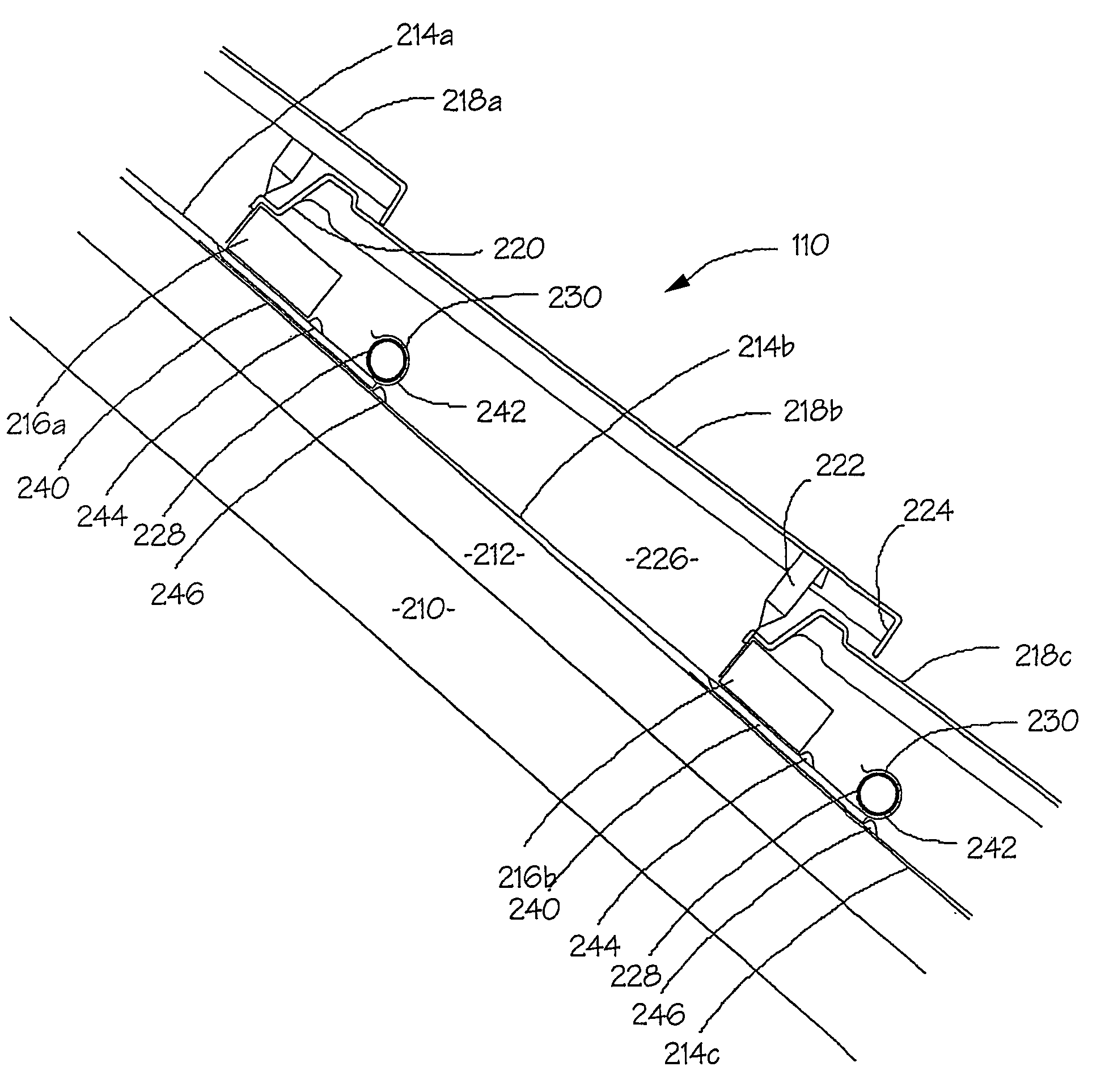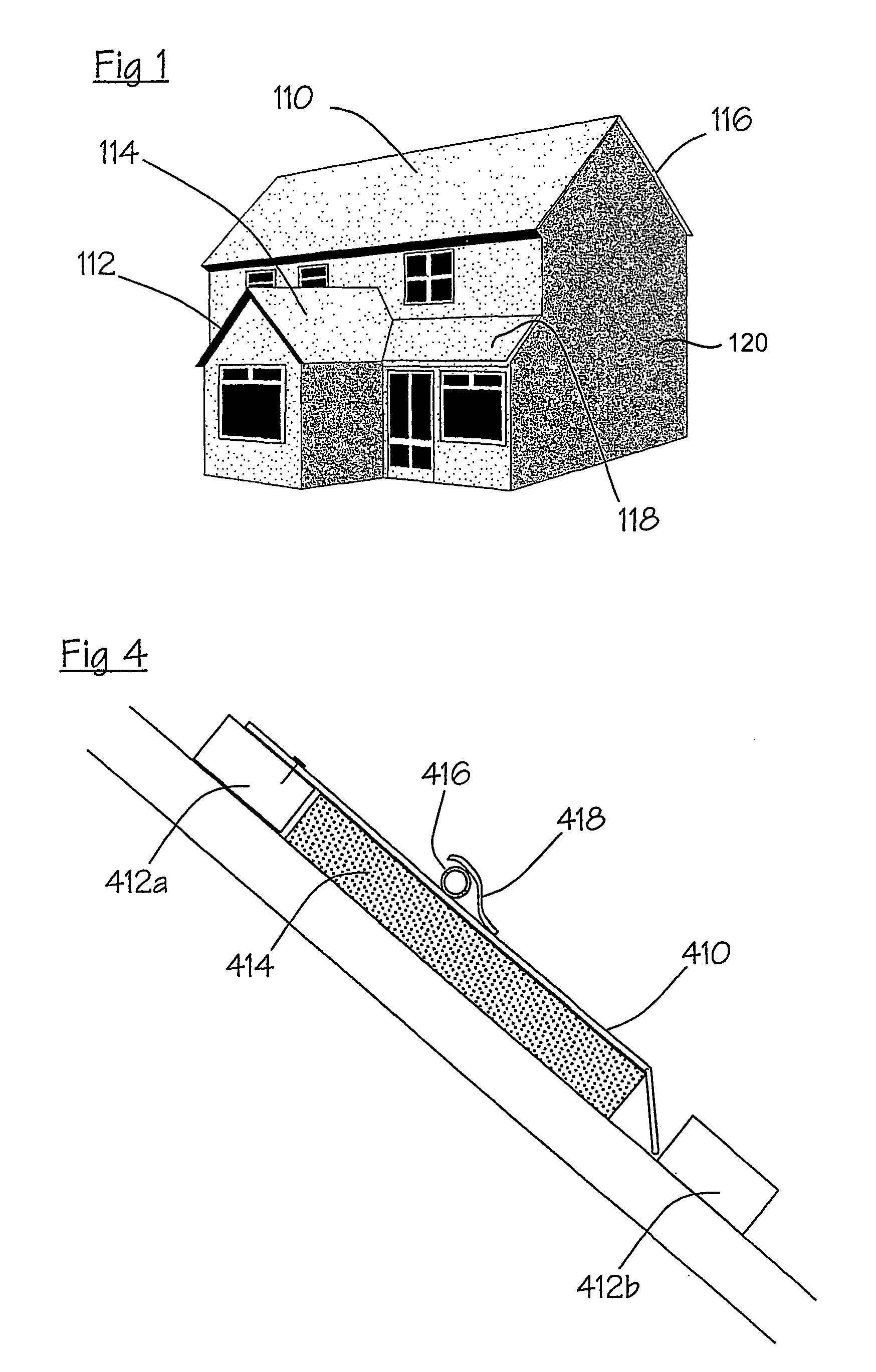Solar thermal roofing
a solar thermal and roofing technology, applied in solar heat collectors with working fluids, solar heat collectors for particular environments, photovoltaics, etc., can solve the problems of lack of insulative covering, energy capture, time and cost in interconnection,
- Summary
- Abstract
- Description
- Claims
- Application Information
AI Technical Summary
Benefits of technology
Problems solved by technology
Method used
Image
Examples
Embodiment Construction
[0027]Referring first to FIG. 1, the house shown therein has a roof face 110. As will be described in more detail hereinafter, the roof face 110 is arranged as a solar thermal collector. The roof face 110 is chosen for this purpose because it is disposed generally towards the Equator (in contrast to the roof faces 112, 114 and 116) and because it is large (in comparison with the porch roof face 118).
[0028]It may be noted that if the disposition of the house of FIG. 1 were (as viewed from above) turned through 90° clockwise, the roof face 114 would then face the Equator and could be used as a solar collector instead of the face 110. However, in this disposition it would be better to use the wall face 120 because of its greater size. (The invention is applicable to wall faces as well as to roof faces).
[0029]Referring now to FIG. 2, this shows that the roof face 110 comprises a thermally insulative layer 210 and a plurality of counter battens 212 secured over the layer 210. The counter...
PUM
 Login to View More
Login to View More Abstract
Description
Claims
Application Information
 Login to View More
Login to View More - R&D
- Intellectual Property
- Life Sciences
- Materials
- Tech Scout
- Unparalleled Data Quality
- Higher Quality Content
- 60% Fewer Hallucinations
Browse by: Latest US Patents, China's latest patents, Technical Efficacy Thesaurus, Application Domain, Technology Topic, Popular Technical Reports.
© 2025 PatSnap. All rights reserved.Legal|Privacy policy|Modern Slavery Act Transparency Statement|Sitemap|About US| Contact US: help@patsnap.com



